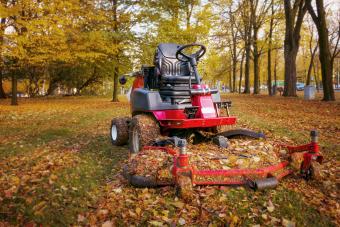
Your Fall Garden Cleanup Checklist
Remove Spent or Dead Plants
Get ready to uproot or trim some of the plants that are done for the season. It’s best not to leave old tomato plants, pumpkin vines, or other vegetable plants in the garden, since they can harbor pests and diseases. Dispose of anything that shows signs of disease and toss the rest in the compost bin.
Clean Up and Compost Fallen Fruit
Leaving fallen tomatoes or squashes in your garden means you are going to have dozens of them popping up next year, and you’ll spend a good amount of time weeding them out. (Plus, there’s nothing quite as gross as reaching into a garden bed and ending up with a handful of rotten tomato.) Clean out any fallen fruit and compost it.
Make New Beds
The garden tends to slow down in the fall, and this is an excellent time to consider changes you’d like to make for next year (way easier while this season is still fresh in your mind). Do you want to expand the garden? Making those new beds for plants in the fall means that you can get planting that much sooner in spring, because you’ll have done the work ahead of time.
Give Newly Planted Plants Plenty of Mulch
A good three- to four-inch layer of mulch (such as shredded leaves, pine straw, or bark mulch) around a new plant will prevent it from heaving out of the soil during the freeze-thaw cycles that often happen in fall and spring. They don’t have strong roots yet to hold them in, so the mulch acts as a blanket that keeps the soil at a steadier temperature. Just be sure not to press the mulch right up against the trunk or stems, since this can lead to rot.
Remove Annuals From Containers
If you grew hanging baskets or pots with flowering annuals, this is the time to pull them out and compost them. While you’re at it, this is a good time to give the containers a good cleaning and store them out of the weather. Next spring, you’ll be ready to plant!
Weed and Mulch
A little weeding now saves a ton of weeding later. Give the flower garden a good, thorough weeding so you can reduce the amount of weeding you’ll have to do next spring. Apply a three-inch deep layer of mulch to make sure no more weed seeds germinate and to keep the soil protected over the winter.
Yearly Fall Cleanup for the Lawn
The best way to help make sure that your lawn is as healthy and lush as possible next year is to put in a little effort and preparation this fall. None of these tasks are particularly time consuming, but they can make a big difference.
Rake Leaves or Use a Mulching Mower
Leaving fallen leaves on the grass can result in them matting and then suffocating the grass below, leading to yellow or dead patches of lawn. Rake and compost them. Or use a mulching mower, which will finely shred the leaves, which you can then leave right on your lawn to provide additional fertility.
Seed Thin or Bare Spots in the Lawn
We get it; we have some bare spots too. Luckily, cooler, rainier fall weather is the perfect time to either over seed your lawn or seed any bare areas. You’ll want to sow grass seed no later than 45 days before your first fall frost to give the new grass time to get established.
Make Sure to Mow the Lawn Before It Starts Snowing
You’ll need to give your lawn one last good mowing before you put the lawnmower away for the season. If you leave your grass too long, and then it sits under snow all winter, it provides the perfect situation for what’s known as snow mold. We hate this stuff for a bunch of reasons (spring allergies top the list, though.)
Snow mold is a totally unattractive pink or white mold that appears on the lawn in spring. This usually happens when it snows before the ground has fully frozen. If your grass is tall, that’s the perfect environment to harbor the mold. Cut the grass to around 2½ to 3 inches tall before winter.





